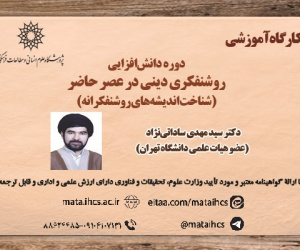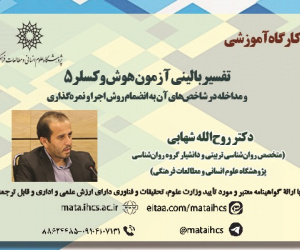کاوشی در متعلّقاتِ نقد اخلاقی در دنیای هنر (مقاله علمی وزارت علوم)
درجه علمی: نشریه علمی (وزارت علوم)
آرشیو
چکیده
هدف: موضوع اصلی جستار حاضر یافتن متعلّقات نقد اخلاقی در دنیای هنر است. این پژوهش می کوشد تا نشان دهد که دامنه نقد اخلاقی فراتر از آثار هنری است، که سنّتاً مهمّ ترین موضوع نقد اخلاقی بوده است. بنابراین، در پی کشف سایر متعلّقات نقد اخلاقی در دنیای هنر، تبیین چگونگی نقد در هر کدام از این حوزه ها، و اهمّیّت آن برمی آید، تا به طریقی چارچوبی جامع برای ارزیابیِ اخلاقیِ کلّ دنیای هنر عرضه کند.روش پژوهش: پژوهش با رویکردی کیفی و تحلیلی، از روش تحلیل مفهومی و استقرایی بهره می برد. داده ها از متون تاریخی، نظریه های فلسفی و مطالعات موردی در هنر استخراج شده است. این روش ترکیبی از بررسی های نظری و عملی را به کار می گیرد تا چارچوبی مستحکم ارائه دهد.یافته ها: پژوهش یازده متعلق اصلی برای نقد اخلاقی در دنیای هنر شناسایی می کند و در هر مورد به تبیین چگونگی نقد از طریق آوردن مثال هایی می پردازد و در نهایت توضیح می دهد که چرا نقد اخلاقیِ حیطه مذکور اهمّیّت دارد: (1) آثار هنری، (2) فرآیند هنرآفرینی، (3) هنرمند، (4) مخاطب، (5) فرآیند ادراک هنری، (6) فراورده نقد هنری، (7) منتقد، (8) فرایند عرضه هنر، (9) عرضه کنندگان هنر، (10) فرآیند تعلیم و تربیت هنری، (11) معلّمان و مربّیان هنر.نتیجه گیری: این جستار، با ارائه چارچوبی نظری و عملی، نشان می دهد که گسترش نقد اخلاقی به تمامی این ابعاد نه تنها ضروری است، بل نقشی اساسی در ارتقای استانداردهای اخلاقی در دنیای هنر و جامعه دارد. در مقابل، نادیده گرفتن این جنبه ها، فرصت هنر برای ایفای نقش مثبت اخلاقی را محدود خواهد کرد.An Exploration of the Objects of Ethical Criticism in the World of Art
The primary aim of this study is to identify the objects of ethical criticism in the art world. It seeks to demonstrate that the scope of ethical critique extends beyond artworks, traditionally considered the most prominent subject of moral evaluation. Accordingly, the research explores additional objects of ethical criticism in the art world, elucidates the methods of critique for each domain, and highlights their significance, ultimately proposing a comprehensive framework for the ethical assessment of the entire art domain. Adopting a qualitative and analytical approach, the study employs conceptual analysis and inductive reasoning. Data is drawn from historical texts, philosophical theories, and case studies in art. This method integrates theoretical exploration with practical insights to establish a robust evaluative framework. The research identifies eleven core objects for ethical criticism in the art world and elaborates on how ethical critique applies to each through examples while explaining their importance: (1) artworks, (2) the process of artistic creation, (3) the artist, (4) the audience, (5) the process of artistic perception, (6) the products of art criticism, (7) the critic, (8) the process of art presentation, (9) art distributors and promoters, (10) the process of art education, and (11) art educators. By presenting a theoretical and practical framework, this study argues that extending ethical criticism to all these dimensions is essential for elevating ethical standards in both the art world and society. Conversely, neglecting these aspects risks limiting art’s potential to serve as a positive ethical force.







